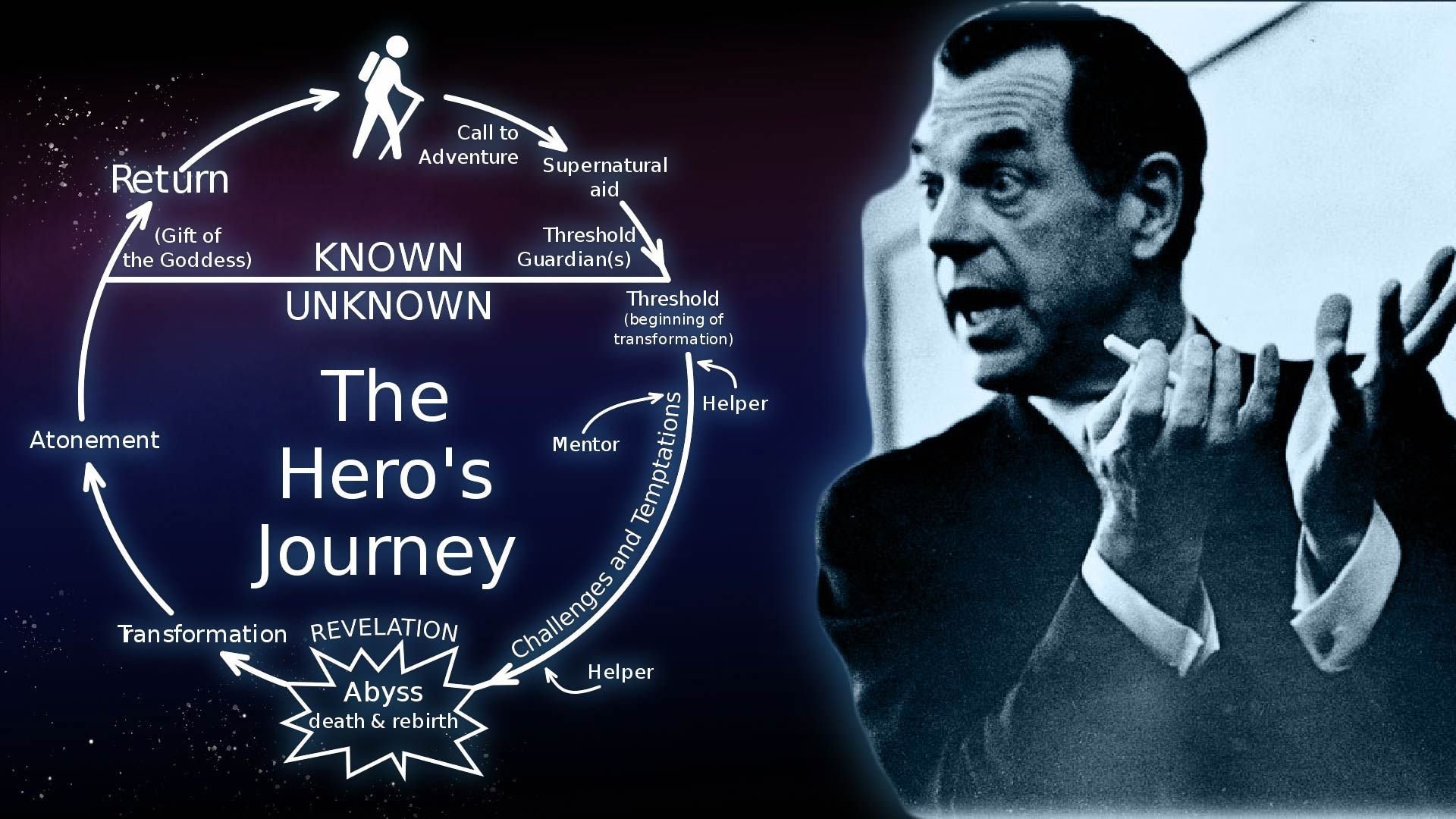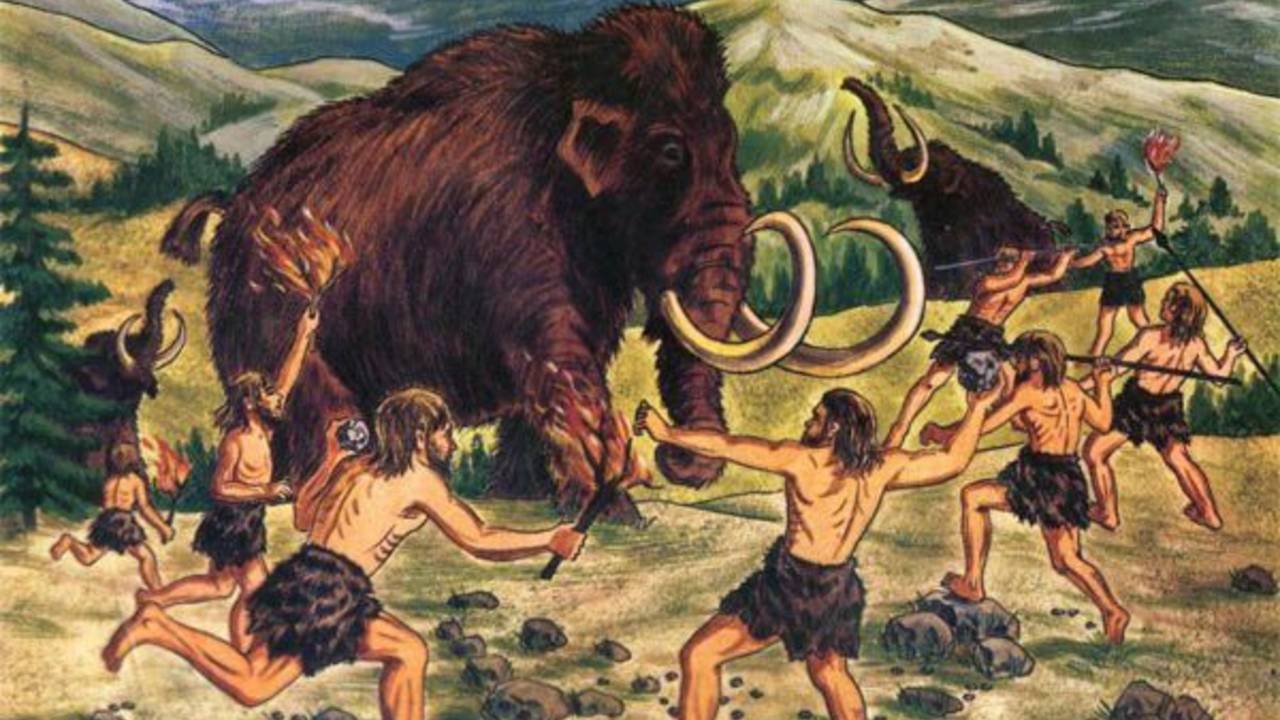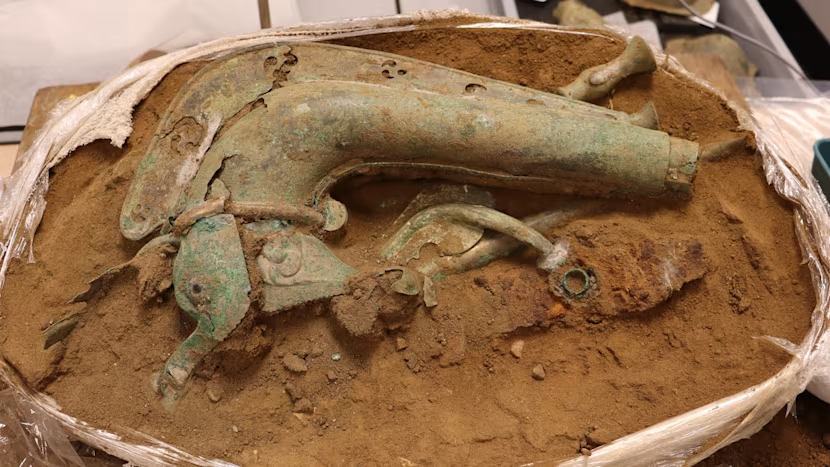Joseph John Campbell (March 26, 1904 – October 30, 1987) was an American writer, mythologist and professor of literature who worked in comparative mythology and comparative religion. His work covers many aspects of the human experience. Campbell's best-known work is his book The Hero with a Thousand Faces (1949), in which he discusses his theory of the journey of the archetypal hero shared by world mythologies, termed the monomyth.
Since the publication of The Hero with a Thousand Faces, Campbell's theories have been applied by a wide variety of modern writers and artists. His philosophy has been summarized by his own often repeated phrase: "Follow your bliss." He gained recognition in Hollywood when George Lucas credited Campbell's work as influencing his Star Wars saga.
The Hero with a Thousand Faces book
Campbell's approach to folklore topics such as myth and his influence on popular culture has been the subject of criticism, including from folklorists.
Comparative mythology and theories
Monomyth
Campbell's concept of monomyth (one myth) refers to the theory that sees all mythic narratives as variations of a single great story. The theory is based on the observation that a common pattern exists beneath the narrative elements of most great myths, regardless of their origin or time of creation. Campbell often referred to the ideas of Adolf Bastian and his distinction between what he called "folk" and "elementary" ideas, the latter referring to the prime matter of monomyth while the former to the multitude of local forms the myth takes in order to remain an up-to-date carrier of sacred meanings. The central pattern most studied by Campbell is often referred to as "the hero's journey" and was first described in The Hero with a Thousand Faces (1949). An enthusiast of novelist James Joyce, Campbell borrowed the term "monomyth" from Joyce's Finnegans Wake.Campbell also made heavy use of Carl Jung's theories on the structure of the human psyche, and he often used terms such as anima, animus and ego consciousness.
As a strong believer in the psychic unity of mankind and its poetic expression through mythology, Campbell made use of the concept to express the idea that the whole of the human race can be seen as engaged in the effort of making the world "transparent to transcendence" by showing that underneath the world of phenomena lies an eternal source which is constantly pouring its energies into this world of time, suffering, and ultimately death. To achieve this task one needs to speak about things that existed before and beyond words, a seemingly impossible task, the solution to which lies in the metaphors found in myths. These metaphors are statements that point beyond themselves into the transcendent. The Hero's Journey was the story of the man or woman who, through great suffering, reached an experience of the eternal source and returned with gifts powerful enough to set their society free.
As this story spread through space and evolved through time, it was broken down into various local forms (masks), depending on the social structures and environmental pressures that existed for the culture that interpreted it. The basic structure, however, has remained relatively unchanged and can be classified using the various stages of a hero's adventure through the story, stages such as the Call to Adventure, Receiving Supernatural Aid, Meeting with the Goddess/Atonement with the Father and Return. These stages, as well as the symbols one encounters throughout the story, provide the necessary metaphors to express the spiritual truths the story is trying to convey. Metaphors for Campbell, in contrast with similes which make use of the word like, pretend to a literal interpretation of what they are referring to, as in the sentence "Jesus is the Son of God" rather than "the relationship of man to God is like that of a son to a father".
In the 1987 documentary Joseph Campbell: A Hero's Journey, he explains God in terms of a metaphor:
God is a metaphor for a mystery that absolutely transcends all human categories of thought, even the categories of being and non-being. Those are categories of thought. I mean it's as simple as that. So it depends on how much you want to think about it. Whether it's doing you any good. Whether it is putting you in touch with the mystery that's the ground of your own being. If it isn't, well, it's a lie. So half the people in the world are religious people who think that their metaphors are facts. Those are what we call theists. The other half are people who know that the metaphors are not facts. And so, they're lies. Those are the atheists.
Functions of myth
Campbell often described mythology as having a fourfold function within human society. These appear at the end of his work The Masks of God: Creative Mythology, as well as various lectures.
The Mystical/Metaphysical Function
Awakening and maintaining in the individual a sense of awe and gratitude before the 'mystery of being' and his or her participation in it
According to Campbell, the absolute mystery of life, what he called transcendent reality, cannot be captured directly in words or images. Symbols and mythic metaphors on the other hand point outside themselves and into that reality. They are what Campbell called "being statements" and their enactment through ritual can give to the participant a sense of that ultimate mystery as an experience. "Mythological symbols touch and exhilarate centers of life beyond the reach of reason and coercion.... The first function of mythology is to reconcile waking consciousness to the mysterium tremendum et fascinans of this universe as it is."
The Cosmological Function
Explaining the shape of the universe
For pre-modern societies, myth also functioned as a proto-science, offering explanations for the physical phenomena that surrounded and affected their lives, such as the change of seasons and the life cycles of animals and plants.
The Sociological Function
Validate and support the existing social order
Ancient societies had to conform to an existing social order if they were to survive at all. This is because they evolved under "pressure" from necessities much more intense than the ones encountered in our modern world. Mythology confirmed that order and enforced it by reflecting it into the stories themselves, often describing how the order arrived from divine intervention. Campbell often referred to these "conformity" myths as the "Right Hand Path" to reflect the brain's left hemisphere's abilities for logic, order and linearity. Together with these myths however, he observed the existence of the "Left Hand Path", mythic patterns like the "Hero's Journey" which are revolutionary in character in that they demand from the individual a surpassing of social norms and sometimes even of morality.
The Pedagogical/Psychological Function
Guide the individual through the stages of life
As a person goes through life, many psychological challenges will be encountered. Myth may serve as a guide for successful passage through the stages of one's life.
Evolution of myth
Campbell's view of mythology was by no means static and his books describe in detail how mythologies evolved through time, reflecting the realities in which each society had to adjust. Various stages of cultural development have different yet identifiable mythological systems. In brief these are:
The Way of the Animal Powers
Hunting and gathering societies
At this stage of evolution religion was animistic, as all of nature was seen as being infused with a spirit or divine presence. At center stage was the main hunting animal of that culture, whether the buffalo for Native Americans or the eland for South African tribes, and a large part of religion focused on dealing with the psychological tension that came from the reality of the necessity to kill versus the divinity of the animal. This was done by presenting the animals as springing from an eternal archetypal source and coming to this world as willing victims, with the understanding that their lives would be returned to the soil or to the Mother through a ritual of restoration. The act of slaughter then becomes a ritual where both parties, animal and mankind, are equal participants. In Mythos and The Power of Myth, Campbell recounts the story he calls "The Buffalo's Wife" as told by the Blackfoot tribe of North America. The story tells of a time when the buffalos stopped coming to the hunting plains, leaving the tribe to starve. The chief's daughter promises to marry the buffalo chief in return for their reappearance, but is eventually spared and taught the buffalo dance by the animals themselves, through which the spirits of their dead will return to their eternal life source. Indeed, Campbell taught that throughout history mankind has held a belief that all life comes from and returns to another dimension which transcends temporality, but which can be reached through ritual.
The Way of the Seeded Earth
Early agrarian societies
Beginning in the fertile grasslands of the Levant and the Fertile Crescent of Mesopotamia in the Bronze Age and moving to Europe, the practice of agriculture spread along with a new way of understanding mankind's relationship to the world. At this time the earth was seen as the Mother, and the myths focused around Her life-giving powers. The plant and cultivation cycle was mirrored in religious rituals which often included human sacrifice, symbolic or literal. The main figures of this system were a female Great Goddess, Mother Earth, and her ever-dying and ever-resurrected son/consort, a male God. At this time the focus was to participate in the repetitive rhythm the world moved in expressed as the four seasons, the birth and death of crops and the phases of the moon. At the center of this motion was the Mother Goddess from whom all life springs and to whom all life returns. This often gave Her a dual aspect as both mother and destroyer.
The Way of the Celestial Lights
The first high civilizations
As the first agricultural societies evolved into the high civilisations of Mesopotamia and Babylonia, the observation of the stars inspired them with the idea that life on earth must also follow a similar mathematically predetermined pattern in which individual beings are but mere participants in an eternal cosmic play. The king was symbolised by the Sun with the golden crown as its main metaphor, while his court were the orbiting planets. The Mother Goddess remained, but her powers were now fixed within the rigid framework of a clockwork universe.
However, two barbarian incursions changed that. As the Indo-European (Aryan) people descended from the north and the Semites swept up from the Arabian desert, they carried with them a male dominated mythology with a warrior god whose symbol was the thunder. As they conquered, mainly due to the superior technology of iron smithing, their mythology blended with and subjugated the previous system of the Earth Goddess. Many mythologies of the ancient world, such as those of Greece, India, and Persia, are a result of that fusion with gods retaining some of their original traits and character but now belonging to a single system. Figures such as Zeus and Indra are thunder gods who now interact with Demeter and Dionysus, whose ritual sacrifice and rebirth, bearing testament to his pre-Indo-European roots, were still enacted in classical Greece. But for the most part, the focus heavily shifted toward the masculine, with Zeus ascending the throne of the gods and Dionysus demoted to a mere demi-god.
This demotion was very profound in the case of the biblical imagery where the female elements were marginalized to an extreme. Campbell believed that Eve and the snake that tempted her were once fertility gods worshipped in their own right, with the tree of knowledge being the Tree of Life. He also found significance in the biblical story of Cain and Abel, with Cain being a farmer whose agrarian offering is not accepted by God, while herder Abel's animal sacrifice is. In the lecture series of Mythos, Campbell speaks of the Mysteries of Eleusis in Ancient Greece, where Demeter's journey in the underworld was enacted for young men and women of the time. There he observed that wheat was presented as the ultimate mystery with wine being a symbol of Dionysus, much like in the Christian mysteries where bread and wine are considered to incarnate the body and blood of Jesus. Both religions carry the same "seeded earth" cosmology in different forms while retaining an image of the ever-dying, ever-resurrected God.
The Way of Man
Medieval mythology, romantic love, and the birth of the modern spirit
Campbell recognized that the poetic form of courtly love, carried through medieval Europe by the traveling troubadours, contained a complete mythology in its own right. In The Power of Myth as well as the "Occidental Mythology" volume of The Masks of God, Campbell describes the emergence of a new kind of erotic experience as a "person to person" affair, in contrast with the purely physical definition given to Eros in the ancient world and the communal agape found in the Christian religion. An archetypal story of this kind is the legend of Tristan and Isolde which, apart from its mystical function, shows the transition from an arranged-marriage society as practiced in the Middle Ages and sanctified by the church, into the form of marriage by "falling in love" with another person that we recognize today. So what essentially started from a mythological theme has since become a social reality, mainly due to a change in perception brought about by a new mythology – and represents a central foundational manifestation of Campbell's overriding interpretive message, "Follow your bliss."
Campbell believed that in the modern world the function served by formal, traditional mythological systems has been taken on by individual creators such as artists and philosophers. In the works of some of his favorites, such as Thomas Mann, Pablo Picasso and James Joyce, he saw mythological themes that could serve the same life-giving purpose that mythology had once played. Accordingly, Campbell believed the religions of the world to be the various culturally influenced "masks" of the same fundamental, transcendent truths. All religions can bring one to an elevated awareness above and beyond a dualistic conception of reality, or idea of "pairs of opposites" such as being and non-being, or right and wrong. Indeed, he quotes from the Rigveda in the preface to The Hero with a Thousand Faces: "Truth is one, the sages speak of it by many names."













